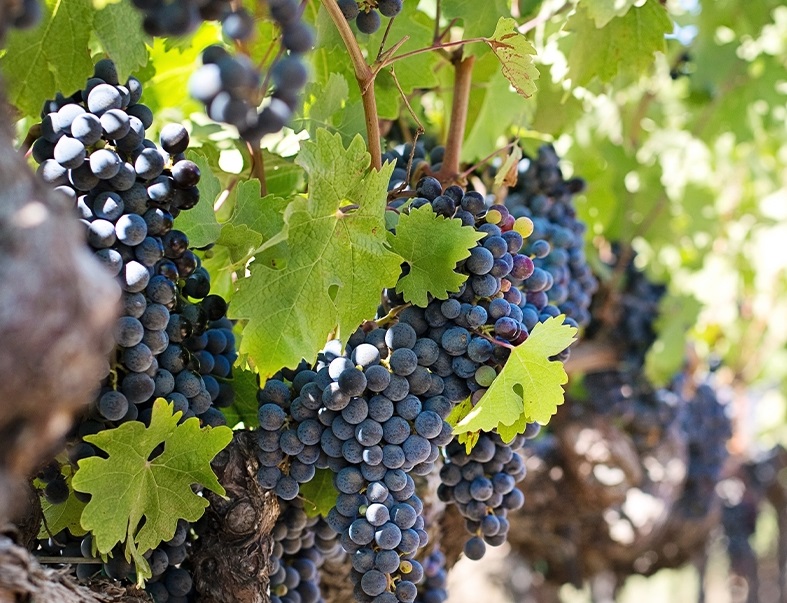From Vine To Vintage - The Role Of Titration In Crafting Fine Wines
One tool that winemakers rely on to ensure the production of exceptional wines is titration. This intriguing chemical technique allows vintners to precisely measure and adjust acidity levels to create the perfect balance and flavour profiles.
Prepare to embark on a captivating journey into vineyards and wine cellars, to uncover the fascinating role of titration in creating wines that tantalise our taste buds and command high prices on expensive restaurant menus around the world.
 Picture 1 of From Vine To Vintage - The Role Of Titration In Crafting Fine Wines
Picture 1 of From Vine To Vintage - The Role Of Titration In Crafting Fine Wines
The Science Of Wine Acidity
Acidity is a fundamental component of wine that influences its taste, balance, and aging potential.
Too much acidity can result in a tart and sharp flavour that makes our lips pucker and our brows furrow, while too little acidity leads to a flat and uninteresting profile.
The goal is to achieve a harmonious balance that accentuates the wine's unique character. To accomplish this, winemakers have some special tricks up their sleeves – one of which is the use of titration, which allows them to measure the acidity levels of every vintage accurately.
Titration – The Winemaker's Secret Weapon
Titration provides winemakers with a powerful – and, importantly, affordable – tool to measure the acidity or otherwise of their wine. By carefully adding a standardised solution (the titrant) to a wine sample, the wine producer can determine the precise concentration of acids present in that particular wine.
The most common method used for this is acid-base titration, where a base solution of known concentration is added to neutralise the acids in the wine. The endpoint is detected, using a pH indicator or pH meter, signalling the completion of the reaction.
While in theory, other testing methods could be used – like liquid or gas chromatography – the truth is that these methods are simply too costly, requiring wineries to hire specialist staff and purchase instruments and equipment for eye-watering prices.
Titration, on the other hand, is just as effective, and much cheaper. You can easily find an affordable and high-quality selection of titrators with the help of a company like Metrohm, ranging from stand-alone options through to fully automated systems.
Balancing Act – Adjusting Wine Acidity
Once the winemaker has worked out the initial acidity of a particular wine, using titration, they can make an informed decision on how to adjust it to achieve their desired flavour profile.
If the wine is too acidic, the winemaker may choose to carry out a process called deacidification. This involves adding carefully calculated amounts of a basic substance, like calcium carbonate or potassium bicarbonate, to neutralise the excess acid. They can then use titration again to monitor the new acidity levels and make sure they've achieved the perfect balance.
On the other hand, if the wine lacks enough acidity, the winemaker can perform an acidification process. To do this, they simply add measured amounts of tartaric, malic, or citric acids to enhance the acidity of the wine. Titration can be used again here to guide the winemaker, ensuring that the correct amount of acid is added to achieve the ideal balance.
Finetuning The Finale
Once the fermentation process is complete, the real magic of winemaking begins during the aging and maturing stages. During this period, the wine undergoes a complex dance of chemical reactions that shape its character and develop its unique flavours and aromas. The oak barrels it is stored in play a vital role, infusing the wine with subtle nuances and contributing to its complexity.
Meanwhile, the winemaker closely monitors and nurtures the wine, tending to its needs. They assess its progress, periodically sampling and analysing it to ensure it is maturing gracefully. This involves using titration techniques to measure acidity levels, adjusting as necessary to maintain the desired balance. This can be a very delicate process, something like a dance between art and science, as the winemaker carefully guides the wine through its transformation.
These aging and maturing stages can range from months to several years, depending on the type of wine and the winemaker's own vision for their product. Like a symphony conductor, the winemaker orchestrates the different elements of each vintage, with the goal of bringing them into perfect harmony.
A Bit Of Bubbly
It's not just your favourite bottle of Pinot Grigio or Chardonnay that benefits from the use of titration on its journey from the vine to your wine cabinet. Titration is also a vital tool for producers of sparkling wines, like the Prosecco so beloved by the British wine-drinking public.
In the production of sparkling wines, the precise control of acidity is absolutely crucial. The addition of liqueur de tirage, which triggers the second fermentation process, requires accurate acid adjustment by the winemaker.
Titration enables them to determine the precise amount of sugar and acidity needed, resulting in the perfect effervescence and balance of the final product.
A Delicious Overview
There's no denying that titration serves as a valuable ally for winemakers, guiding them through the delicate and often painstaking task of achieving optimal acidity levels.
With this versatile technique at their fingertips, vintners can harness the power to fine-tune the flavour profiles, balance, and aging potential of their wines. From adjusting acidity to monitoring the evolution of wines throughout the aging process, titration helps to ensure the production of exceptional wines that delight our palates and enhance our meals.
Ultimately, the result of this patient and meticulous process is a wine that hopefully manages to captivate the senses with every sip, inviting you – the drinker - to savour its intricate layers of flavours and aromas. Each bottle tells its own unique story, serving as a testament to the winemaker's dedication and the wine's own journey through time.
So, the next time you raise a glass of your favourite fine vintage, don't forget to make a toast to the harmonious dance of acids and bases and the vital role titration played in producing that delightful liquid you're about to savour!
You should read it
- How to Watch Vines
- Vine new web version helps users easily search for videos
- 'Deadly' weakness of Lumia 1020
- Train AI to 'smell' wine for traceability
- How to download photos and videos on Instagram on Android to share with friends
- ZTE sent a trial invitation to launch a new product on September 16
- 5 great apps that support making Facebook avatars with videos
- Telegram surpasses WhatsApp's face on the AppStore free app rankings
- 10 most beautiful and rarest flowers in the planet
- How will play Super Mario at 380,000 frames per second?
- 25 unexpected facts about orange sure you don't know
- What to do when Skype video doesn't work?






 Synthetic beautiful vintage background
Synthetic beautiful vintage background What is fine dust? The harmful effects of inhaling ultra-fine dust in the air you need to know
What is fine dust? The harmful effects of inhaling ultra-fine dust in the air you need to know Top 8 best quality vintage photography apps on phones
Top 8 best quality vintage photography apps on phones How to Collect Vintage Computers
How to Collect Vintage Computers How to Watch Vines
How to Watch Vines Vine new web version helps users easily search for videos
Vine new web version helps users easily search for videos